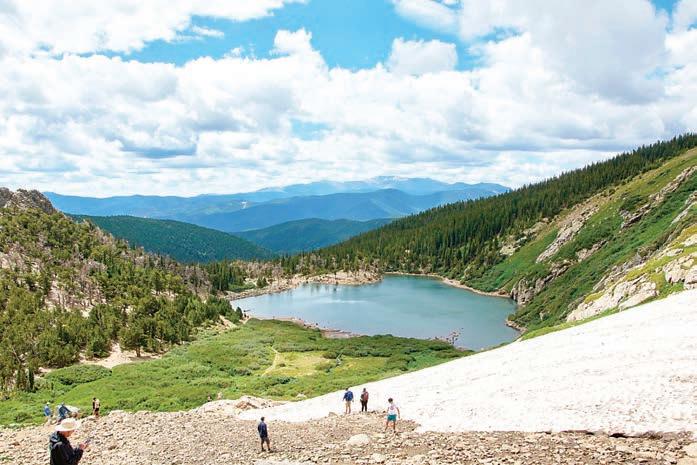
1 minute read
Snowmelt is swelling Colorado’s rivers
BY SHANNON MULLANE THE COLORADO SUN
Floods, swollen rivers, road closures — Colorado’s spring runo season is in full swing and much of the snow in the state’s mountains hasn’t melted yet.

Colorado saw higher-than-average snowfall build up on the Western Slope this year, a boon for irrigators and other water users who rely on the Colorado River Basin which spans Colorado, tribal lands, six Western states and parts of Mexico. But the snowmelt, with the help of recent weather, is leading to high runo and its adverse impacts are popping up around the state like a game of whack-a-mole.
Beyond monitoring for mudslides and rockfalls loosened by rain and high runo , the Colorado Department of Transportation is also watching bridges and roads for possible closures.
“I’m seeing higher ows in almost every single drainage that we have over here (in western Colorado) than what we’ve seen probably in at least four or ve years, if not longer,” said Julie Constan, a CDOT regional director. “We had such a heavy snowpack across the entire western portion of the state, so that’s causing all of the creeks to de nitely be running higher than what we’re used to seeing.”
On the Front Range and Eastern Plains, 10 days of rain in May helped with the state’s continuing recovery from drought over the past year. e amount of the state experiencing drought conditions has dropped from 93% a year ago to just 11% today.
But the rain has also combined with snowmelt to cause ooding around Colorado. In northeastern and southwestern Colorado, communities in the White-Yampa River Basin and along the Dolores River have built sandbag barriers to slow encroaching ooding. On May 11 in Denver, Cherry Creek leapt to its highest ow rate since 1980 after intense rain supplemented by reservoir releases, according to media reports.
For anyone traveling, camping or oating the river over Memorial Day weekend, checking road and weather conditions will be key for a safe outing.
Statewide, 42 people died in waterrelated accidents in 2022, according to the Colorado Parks and Wildlife.








